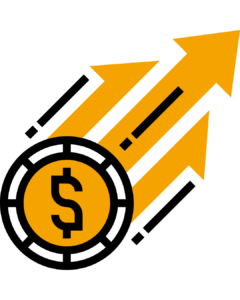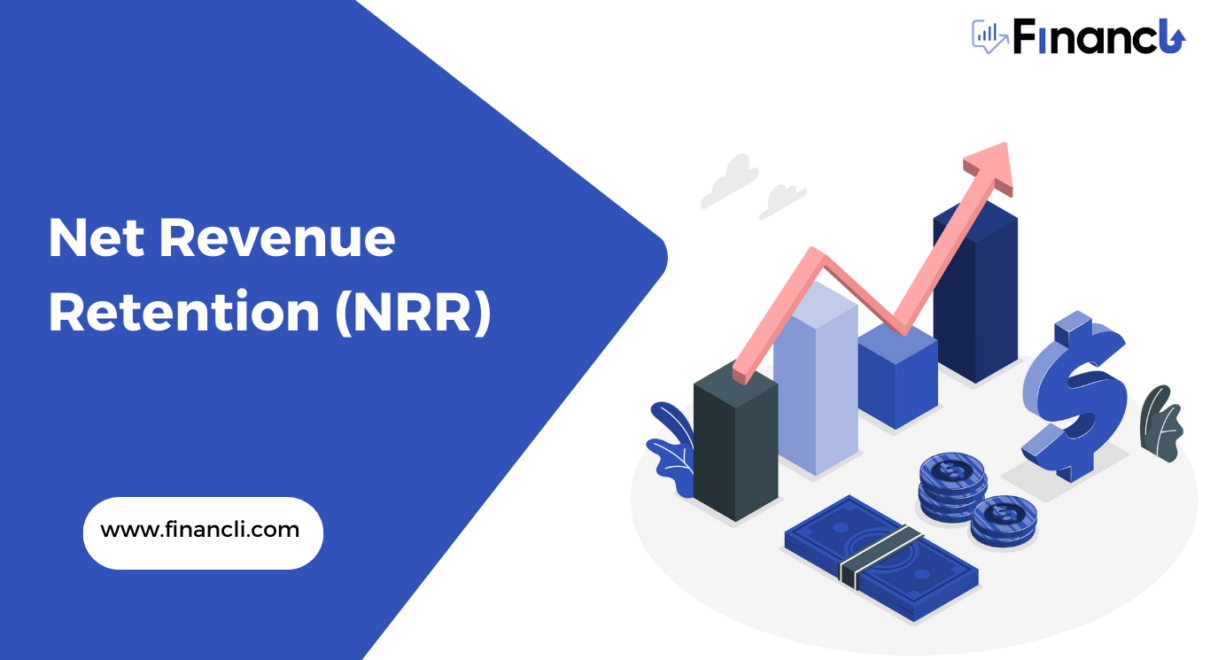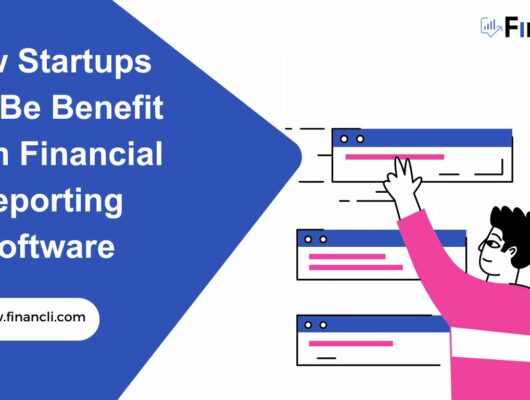Net Revenue Retention (NRR) is a metric that measures the percentage of revenue retained from a cohort of customers over a specific period of time. It provides insight into how effectively a company retains its existing customers and expands its revenue streams.
NRR is a valuable metric for subscription-based businesses and companies with recurring revenue streams, as it provides insights into the health of their customer base and the effectiveness of their customer retention and expansion efforts.
The formula of Net Revenue Retention (NRR)
The formula for calculating Net Revenue Retention (NRR) is as follows:
NRR = (Revenue at the end of a period – Revenue lost due to churn) / Revenue at the beginning of a period
Where:
- Revenue at the beginning of a period refers to the total revenue generated from a cohort of customers at the beginning of a period, such as a year.
- Revenue at the end of a period refers to the total revenue generated from the same cohort of customers at the end of the same period.
- Revenue lost due to churn refers to the revenue lost from customers who churned or stopped doing business with the company during the period.
By dividing the net revenue retained by the starting revenue, we can determine the percentage of revenue retained from that cohort of customers over that period of time.
NRR is a valuable metric for measuring the effectiveness of a company’s customer retention and expansion efforts, especially for subscription-based businesses and companies with recurring revenue streams.
Let’s say that a subscription-based software company has an NRR of 110% for the year’s first quarter. It means that the company has retained 110% of the revenue from its existing customers after accounting for any revenue lost due to churn.
Assuming the company had $1 million in revenue from its existing customers at the beginning of the year, this would mean that:
- Revenue lost due to churn during the first quarter was $50,000.
- Revenue generated from upgrades and cross-sells during the first quarter was $150,000.
- Revenue at the end of the first quarter was $1.2 million.
Using the NRR formula, we can verify the following:
- NRR = (Revenue at the end of the period – Revenue lost due to churn) / Revenue at the beginning of the period
- NRR = ($1.2 million – $50,000) / $1 million
- NRR = $1.15 or 115%
It means that the company retained all of its revenue from its existing customers. And increased revenue by 15% through upsells and cross-sells during the first quarter.
An NRR of 110% or higher indicates that the company has a strong retention and expansion strategy for its customer base, which can be critical for the long-term success of a subscription-based business.
Importance of Net Revenue Retention (NRR) in SaaS

Net Revenue Retention (NRR) is an important metric for Software as a Service (SaaS) companies. It measures the company’s ability to retain and expand revenue from its existing customer base. Here are some reasons why NRR is important in SaaS:
- Predictable revenue: NRR helps to provide a predictable revenue stream for a SaaS company by highlighting the revenue generated from existing customers over time. A higher NRR indicates that the company is able to retain and expand revenue from its existing customers, which can be more predictable than acquiring new customers.
- Customer lifetime value: A higher NRR is an indication of a higher customer lifetime value (CLV), which is the total revenue generated by a customer over their lifetime with a company. By retaining and expanding revenue from existing customers, a SaaS company can increase its CLV and profitability over the long term.
- Cost efficiency: Retaining and expanding revenue from existing customers is generally more cost-efficient than acquiring new customers. A high NRR indicates that the company is able to generate more revenue from its existing customers, reducing the need to invest heavily in customer acquisition.
- Customer satisfaction: A high NRR often indicates high customer satisfaction, as customers are more likely to continue using and paying for a service if satisfied. By measuring NRR over time, a SaaS company can track changes in customer satisfaction and adjust its customer retention and expansion strategies accordingly.
Overall, NRR is a valuable metric for SaaS companies as it provides insights into the health of their customer base and the effectiveness of their customer retention and expansion efforts. By measuring and improving NRR over time, SaaS companies can increase revenue, profitability, and customer satisfaction.
Drawbacks of Net Revenue Retention (NRR)
While NRR can be a valuable metric for companies to track, there are also some potential drawbacks to using it:
- Focuses only on existing customers: NRR does not take into account new customer acquisition or the potential for future growth. While retaining existing customers is important, a company’s ability to acquire new customers and expand its customer base is also critical for long-term success.
- Limited insight into customer satisfaction: NRR does not provide any information about why customers are staying or leaving. It is possible that customers are staying because they are satisfied with the product or service, but it is also possible that they are staying for other reasons, such as being locked into a contract or not having alternative options. Similarly, customers may leave for reasons unrelated to the product or service, such as a change in their business or personal circumstances.
- It may not reflect the complete picture: NRR only considers revenue from existing customers, but it does not consider other factors that may impact a company’s financial performance, such as changes in market conditions or fluctuations in the economy. NRR can be a useful metric for tracking customer retention, but it should not be the sole measure of a company’s financial health.
- Can be misleading: NRR may not always accurately reflect a company’s performance. For example, if a company has a high NRR, it may appear to be doing well in terms of customer retention, but if it is not acquiring enough new customers, its overall revenue may still be declining. Additionally, pricing or product offerings changes can impact NRR, making it difficult to compare NRR across different periods.
What is an Ideal NRR?

There is no one-size-fits-all answer to an ideal Net Revenue Retention (NRR), as it can vary depending on the industry, business model, and other factors. Generally, a higher NRR is preferred as it indicates that a company is retaining more of its existing customers and generating recurring revenue from them. However, what is considered a good NRR can differ significantly between different industries and companies. For example, some SaaS companies aim for an NRR of 110% or higher, while others may be satisfied with an NRR of 90%. Ultimately, the ideal NRR for a company will depend on its specific circumstances and goals. It should be used in conjunction with other metrics to gain a complete picture of the company’s financial health.
How to Increase Net Revenue Retention (NRR)?
There are several ways a company can increase its Net Revenue Retention (NRR):
- Improve customer satisfaction: A satisfied customer is more likely to renew their subscription or continue doing business with a company. Ensuring customers are happy with the product or service can help increase NRR.
- Upsell or cross-sell: Offering customers additional products or services can help increase their lifetime value and generate more revenue. It can also help deepen customer relationships and increase retention.
- Provide excellent customer support: Providing timely and effective customer support can help to address any issues or concerns that customers may have, which can help to increase retention and reduce churn.
- Personalize the customer experience: A personalized experience can help deepen the relationship with the customer and increase their loyalty to the brand.
- Offer loyalty incentives: Offering incentives such as discounts or rewards for long-term customers can
help to increase retention and reduce churn. - Improve product or service quality: Ensuring that the product or service is of high quality can help to increase customer satisfaction and reduce churn.
- Reduce friction in the customer journey: It helps to improve the customer experience and make it more likely that they will continue doing business with the company.
By implementing these strategies, companies can improve their NRR and increase their revenue from existing customers.
Net Revenue Retention (NRR): Companies Examples

Here are some examples of companies that use Net Revenue Retention (NRR) as a key performance indicator:
- Zoom Video Communications: A video conferencing software provider that uses NRR as a metric to measure customer retention and loyalty. In Q3 2020, Zoom reported an NRR of over 130%, indicating that it was able to retain and upsell a significant number of its existing customers.
- Shopify: Shopify is an e-commerce platform that uses NRR to measure the success of its subscription-based business model. In Q3 2020, Shopify reported an NRR of 120%, indicating that it could retain and upsell many of its existing customers.
- Salesforce: Salesforce is a customer relationship management (CRM) software provider that uses NRR as a key metric to measure customer retention and loyalty. In Q3 2020, Salesforce reported an NRR of over 100%, indicating that it was able to retain all of its existing customers and generate additional revenue from them.
- Twilio: Twilio is a cloud communications platform that uses NRR to measure the success of its subscription-based business model. In Q3 2020, Twilio reported an NRR of 140%, indicating that it could retain and upsell many of its existing customers.
- HubSpot: HubSpot is a marketing, sales, and customer service software provider that uses NRR to measure the success of its subscription-based business model. In Q3 2020, HubSpot reported an NRR of over 100%, indicating that it was able to retain all of its existing customers and generate additional revenue from them.
How do other Metrics affect Net Revenue Retention (NRR)?
Net Revenue Retention (NRR) is a metric that is affected by several other metrics in a company. Here are some examples:
- Customer acquisition cost (CAC): CAC is the cost of acquiring a new customer. High CAC can lead to increased pressure on a company to generate more revenue from existing customers, which can positively impact NRR.
- Customer lifetime value (CLTV): CLTV is the estimated revenue that a customer will generate over their lifetime with a company. Higher CLTV means more revenue from existing customers, which can positively impact NRR.
- Churn rate: The churn rate is the rate at which customers stop using a company’s product or service. A high churn rate can lead to lower NRR as the company is losing revenue from existing customers.
- Gross revenue: Gross revenue is the total revenue generated by a company. Higher gross revenue can positively impact NRR, as it can increase the overall pool of revenue that can be retained from existing customers.
- The average revenue per user (ARPU): ARPU is the average revenue generated per user. Higher ARPU can lead to more revenue from existing customers, which can positively impact NRR.
A company can improve its NRR and overall financial performance by monitoring and optimizing these metrics.
How to Visualize Net Revenue Retention (NRR)?
Visualizing NRR can help companies understand the health of their customer base and identify opportunities for growth.
Here are some ways to visualize Net Revenue Retention:
-Line chart:
A line chart is a simple and effective way to visualize NRR over time. The x-axis represents the time period, and the y-axis represents the NRR percentage. This chart can show trends over time and can help identify patterns in customer behavior.
-Bar chart:
A bar chart can be used to compare NRR across different segments of customers. For example, you can compare NRR for customers in different industries or geographic regions. The x-axis represents the customer segment, and the y-axis represents the NRR percentage.
-Cohort analysis:
Cohort analysis is a powerful way to visualize NRR by customer cohort. Cohorts are groups of customers who share a common characteristic, such as the month they signed up for a service. This analysis can show how NRR varies over time for different cohorts and can help identify opportunities to improve retention.
-Heatmap:
A heatmap can be used to visualize NRR by customer type and time period. The rows represent the customer type, and the columns represent the time period. The color of each cell represents the NRR percentage. This chart can quickly identify which customer types are performing well and which ones need attention.
-Funnel chart:
A funnel chart can be used to visualize the customer journey and identify where customers drop off. This chart can show the percentage of customers who upgrade, downgrade, or cancel their subscriptions. By analyzing this chart, you can identify where improvements can be made to improve NRR.
Overall, visualizing NRR is crucial for companies to understand the health of their customer base and identify opportunities for growth. By using these different visualization methods, companies can gain valuable insights into customer behavior and improve their NRR over time.
Ways to Enhance Your Net Revenue Retention by Reducing Customer Churn

Reducing customer churn is critical for enhancing Net Revenue Retention (NRR). It helps companies retain existing customers, reduce acquisition costs, and increase revenue from upsells and cross-sells. Here are some ways companies can reduce customer churn and improve their NRR:
-Improve customer onboarding:
A smooth onboarding process is crucial for customer retention. Companies need to ensure that new customers understand how to use their product or service and get value from it quickly. It can help reduce the likelihood of churn in the early stages of the customer lifecycle.
-Offer excellent customer support:
Providing excellent customer support is another crucial factor in reducing churn. Companies need to be responsive and helpful when customers have issues or questions. It can help build customer trust and loyalty, reducing the likelihood of churn.
-Conduct customer feedback surveys:
Customer feedback surveys can help companies understand their customers’ needs and preferences. Companies can use this feedback to improve their products and services and reduce churn.
-Analyze customer behavior:
Analyzing customer behavior can help companies identify customers who are at risk of churning. Companies can use this information to take proactive steps to retain these customers, such as offering special discounts or personalized support.
-Offer incentives for customer loyalty:
Companies can incentivize customer loyalty by offering discounts or other perks to customers who have been with them for a certain period. This can encourage customers to stay with the company and increase their lifetime value.
-Improve product or service quality:
Improving product or service quality is a crucial factor in reducing churn. Companies must ensure that their products or services meet customers’ needs and expectations. It can help reduce the likelihood of churn due to dissatisfaction.
-Develop a customer success program:
A customer success program can help companies proactively engage with customers. And ensure that they are getting value from the product or service. It can help build a relationship of trust and loyalty, reducing the likelihood of churn.
Overall, reducing customer churn is critical for improving NRR. By implementing these strategies, companies can reduce churn, retain existing customers, and increase revenue from upsells and cross-sells.






